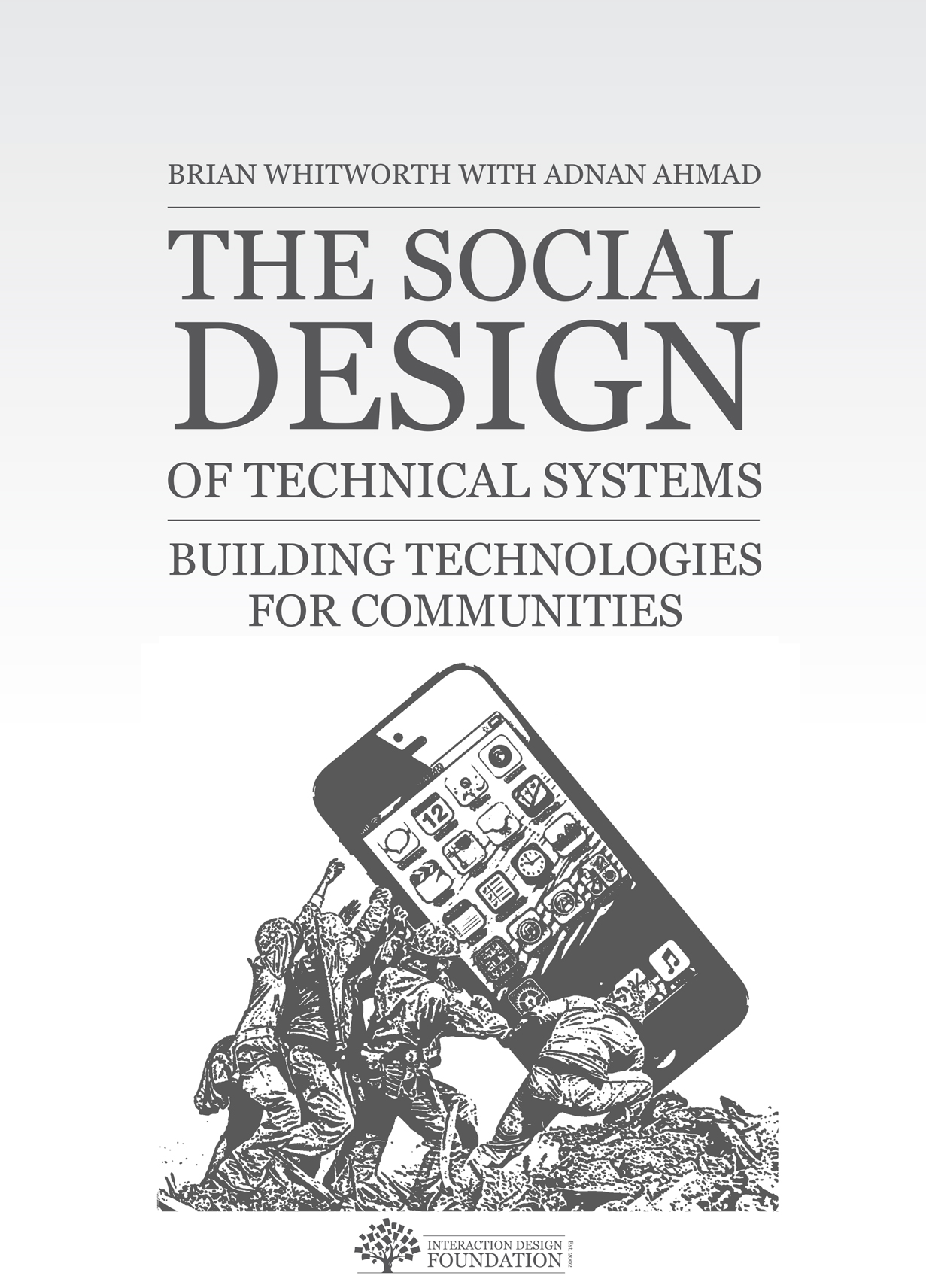This book was written for a University course on Social Technical Design. Next to Read
About this book
A social technical system (STS) is a social system operating on a technical base. Email, chat, bulletin boards, blogs, Wikipedia, EBay, Twitter, Facebook and YouTube are all social technical systems. Hundreds of millions of people use them every day, but how do they work? More importantly, how can we build them better?
This book is designed for use in courses on social technical system design and evaluation. The field changes every year, so each chapter has discussion questions, to encourage students to try out recent examples and report on them to the class. The general issues raised may also interest designers and managers of social software and anyone who participates in social computing.
The book questions the view that computing is smart and people are dumb. People in a social community are ethical not because they foolishly cannot see their own self-interest but because they intuitively can see community gains. As physical world social standards like privacy, freedom, democracy, ownership and transparency can guide online communities, so online successes like Wikipedia can help us improve physical society.
Information technology, like fire, is a good servant but a bad master. People and computers are better than people or computers, but only if people are the senior partner. Social computing takes human centered computing a step further by putting communities first. The aim of social technical design is no less than the civilization of computer technology.
We, the authors, hope you, the reader, find this book interesting and useful. Don’t be daunted by the breadth of ideas covered. If both computing and social interaction are complex, how could they be any less so when put together? Yet people build social technical systems and so there is a need for social technical design. The ideas presented in this book have developed over the last decade and been found to work. They are proven perennials in the ever changing garden of computing.
